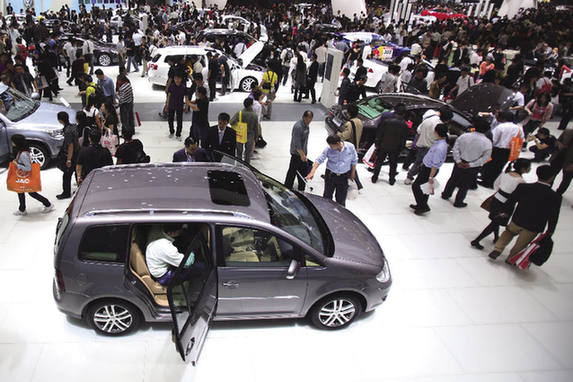| Intractable Traffic Jams
By staff reporter LU RUCAI
The volume of auto sales in the first quarter of 2009 gave some breathing space to those concerned about China's economic slowdown in the wake of the global financial crisis.
According to statistics released by the China Association of Automobile Manufacturers (CAAM), in the first quarter of 2009, 2.6788 million automobiles were sold in China, placing it first worldwide, an increase of 3.88 percent over the same period last year. In Beijing a total of 250,000 automobiles were sold, marking a 17.4 percent hike, much higher than the national average.
Achieving growth in auto sales is one thing; finding a solution to traffic jams is more difficult. On October 11, 2008, Beijing introduced a rotating one-day-a-week restriction on car use based on license plate numbers. After evaluation, the Beijing municipal government recently announced it would continue with these measures for one year.
The new traffic restrictions stipulate that from Monday to Friday, all motor vehicles will continue to have one day off the road, according to license plate numbers. However the restrictions are now in place from 7 am to 8 pm, shorter than the previous 6 am to 9 pm time slot. In addition, the cycling out of a license plate number has gone from one a month to one every 13 weeks.
 |
|
Numerous international auto giants are targeting the Chinese auto market during the global financial crisis. |
Effects of Traffic Restrictions
"It was expected that the government would continue traffic restrictions," said Han Jingrun, a car owner who works for a securities company in the LG Twin Towers in Beijing's CBD. He drives his car 15 kilometers to work every day. In April, when the initial traffic restriction period was about to expire, he and other members of a car club speculated about whether the government would continue the measures.
"Traffic restrictions are inconvenient for car owners. But it must be admitted that the measures have reduced car flows during rush hour, and car speeds have increased," comments Han. Before the measures were enacted, it took Han one hour to get to his office. Traveling time has now been cut to around 40 minutes.
Before announcing renewal of the traffic restrictions, the Beijing Transportation Research Center published an evaluation of the measures thus far. According to the report, the one-day-per-week restriction reduced Beijing's traffic congestion index from "moderate" (7.54) to "mild" (5.15), and workday congestion periods have been shortened from 7.75 hours to 2.5 hours.
Guo Jifu, director of the research center, said that before traffic restrictions were introduced, the morning rush hour from 7 till 9 am saw traffic jams on 422 sections of road around the city, across 99 kilometers. After restrictions were brought in, the number of congested road sections dropped to 249 across 55 kilometers.
Before traffic restrictions, the average car speed between 5 and 7pm was 18km/h, only 6 km/h faster than a bicycle. Car speeds during the morning and evening rush hours have now increased 15.6 and 13.8 percent respectively.
The environmental benefits of traffic restrictions have also been identified. The environmental protection authority of the city found that the amount of pollutants discharged by motor vehicles has decreased by 375 tons per day. Hydrocarbon, carbon monoxide, nitrogen oxide and exhalable particle emissions have all dropped between 8 and 10 percent.
| 